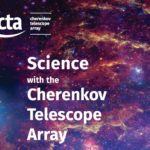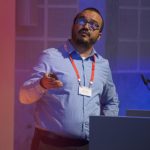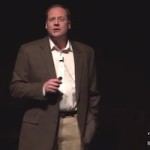Bloomington, IN — The Global Network Operations Center at Indiana University, or GlobalNOC, has signed a four-year agreement in partnership with the Vera C. Rubin Observatory as its inaugural virtual network operations center (VNOC). GlobalNOC will help ensure the transfer of the observatory’s astronomical data from its remote location in Chile to data repositories in the United States and […]
Free Registration: Supercomputing Frontiers Europe Virtual Conference this Week
Today the organizers of Supercomputing Frontiers Europe 2020 announced that it has waived registration for their virtual conference this week. “Over twenty outstanding keynote and invited speakers at Supercomputing Frontiers Europe 2020 will deliver talks on topics spanning various fields of science and technology. Participants will be able to join remotely, ask questions, and learn at a three-day long virtual event.”
Podcast: Astronomers Turn to AI as New Telescopes Come Online
In this AI Podcast, Brant Robertson from UC Santa Cruz describes how astronomers are turning to AI to turn the vast quantities of data that will be pouring out of next-generation telescopes into world-changing scientific discoveries. “Good news: astronomers are getting new tools to let them see further, better than ever before. The bad news: they’ll soon be getting more data than humans can handle.”
Handling and Processing Data from the Cherenkov Telescope Array
Etienne Lyard from the University of Geneva, Switzerland presents: Handling and Processing Data from the Cherenkov Telescope Array.
gave this talk at PASC18. “The Cherenkov Telescope Array (CTA) will be the world’s largest and most sensitive high-energy gamma-ray observatory. Composed of more than 100 telescopes of different sizes between 4 and 23 meters in diameter, it will operate from two separate sites in Chile and at the Canary Islands. It will generate up to 10PB of raw data per year that will be stored in a distributed archive. This talk will outline the current status, plans and challenges that we face to implement the analysis and data pipeline of CTA.”
Supercomputing and the Search for Supernovae
In this video, Berkeley Lab’s Peter Nugent presents: “Supercomputing and the search for supernovae.” The talk was part of the Eight Big Ideas night, where eight Berkeley Lab scientists presented eight game-changing concepts in eight minutes each.









